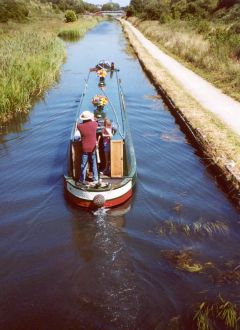The Birmingham to Wolverhampton canal was cut in 1769/72 by the engineer James Brindley and followed the land's natural contours. This original course was consequently quite winding and lay to the east of the present route.
Subsequently, Thomas Telford was engaged to improve the canal. Using straight routes wherever possible the canal, that is still navigable today, gave a shorter journey than the original, went close to key industrial works and included a number of cutting and tunnel projects.
Telford's bold suggestions included a deep cutting through Coseley - thankfully this option wasn't pursued and the tunnel was constructed instead.
The approaches to a tunnel were cut by 1829 and the underground construction carried out during 1835. In 1837 the 360 yards long (329 metres) tunnel, with a tow-path each side, opened. Now both the north portal, in Ivyhouse Lane, and the south portal, in School Street, are Grade ll listed and industrial traffic has given way to leisure transport on the Birmingham Canal Wolverhampton Level.
The upper photograph shows the tunnel's northern entrance in Ivyhouse Lane. The area around the north entrance has always been a problem and the right-hand side is heavily braced.
The central photograph shows the south portal of the tunnel in School Street.
The lower image is of Telford's cut looking towards Deepfields and Woverhampton. This view can be seen from a bridge near the tunnel's north portal.
All photographs taken in July 2003.



